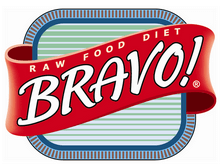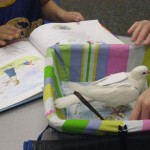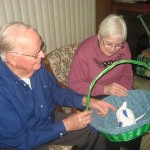Which is better at detecting cancer, a laboratory or a Labrador retriever?
Consider the talents of Tsunami, a regal-looking dog with attentive eyes and an enthusiastic tail wag for her trainer friends. University of Pennsylvania researchers say she is more than 90 percent successful in identifying the scent of ovarian cancer in tissue samples, opening a new window on a disease with no effective test for early detection that kills 14,000 Americans a year. When found early, there’s a five-year survival rate of over 90 percent.
With 220 million olfactory cells in a canine snout, compared with 50 million for humans, dogs have long helped on search-and-rescue. Now, a growing body of evidence supports the possible use of canines by clinicians. The largest study ever done on cancer-sniffing dogs found they can detect prostate cancer by smelling urine samples with 98 percent accuracy. At least one application is in the works seeking U.S. approval of a kit using breath samples to find breast cancer.
“Our study demonstrates the use of dogs might represent in the future a real clinical opportunity if used together with common diagnostic tools,” said Gian Luigi Taverna, the author of the prostate cancer research reported yesterday at the American Urological Association in Boston.
While smaller studies have long shown dogs can sniff out a range of illnesses, the question of whether they can be used on a large-scale basis to find disease has drawn skepticism. Questions remain on whether one type of dog is better than another, how to systemize their use and the financial viability of any such system. As a result, most current research is looking at how to copy the canine abilty to smell disease either with a machine or a chemical test.
‘Method Reproducible’
“Our standardized method is reproducible, low cost and noninvasive for the patients and for the dogs,” said Taverna, the head of urology pathology at Istituto Clinico Humanitas in Rozzano, Italy, in an e-mail.
Taverna tested the ability of two professionally trained explosive detection dogs, Zoe and Liu, in 677 cases to assess their accuracy, according to his paper. The next step, according to Taverna, will be to extend the research into prostate cancer subgroups and to other urological malignancies.
The results may one day be used to help develop an electronic nose that follows nature’s lead in how a canine snout works, he said.
Taverna’s finding comes at a time when use of standard PSA testing for prostate cancer is being challenged as not accurate enough, with false positives leading to unnecessary treatment.
In 2012, the Preventive Services Task Force, which reports on medical issues to the U.S. Congress, recommended that healthy men shouldn’t be screened for prostate cancer using PSA tests after research showed that false positive rates of men tested may be as high as 80 percent. The test measures a protein made by prostate cells called prostate-specific antigen.
Volatile Compounds
When dogs sniff for cancer, they are detecting the chemicals emitted by a tumor. These chemicals are referred to as volatile organic compounds, or VOCs. VOCs have been found in the breath of lung cancer patients and colon cancer patients, as well as in the urine of prostate cancer patients. The most recent findings have spurred increased interest in dog cancer-detection research, including efforts to develop devices that can mimic the animal’s exquisite olfactory system.
Dina Zaphiris, a nationally recognized dog trainer who works with canines on federally funded studies in detecting early cancer in humans, is leading the charge for U.S. Food and Drug Administration clearance of a system that would use the unique olfactory talents of dogs in medical care.
In 2009, Zaphiris, a dog trainer for 25 years with an extensive list of celebrity clients and an education in biology, founded the In Situ Foundation, a nonprofit organization that trains cancer-sniffing dogs and conducts research in the field.
‘Early Warning’
Her organization is in the process of submitting an FDA application for approval of a canine medical scent detection kit. In her system, patients exhale through a tube on to a cloth, which captures molecules, or VOCs, of a malignancy. Trained dogs would then sniff the cloths for their presence.
The dog screening would be an “early warning test,” she said, possibly used in connection with a mammogram for reviewing results before proceeding to a biopsy.
“You should see the amount of e-mails I get saying ‘I got an unclear mammogram and I don’t know if I want a biopsy so could I have dogs screen my breath sample?’,” Zaphiris said.
Zaphiris’s interest in the issue began in 2003 when she worked with a research group on a study to detect breast and lung cancer. A paper on that limited study, published in 2006 in the Journal of Integrative Cancer Therapies, found that dogs could detect lung tumors with 99 percent sensitivity and 99 percent specificity; for breast tumors, results were 88 percent sensitivity and 98 percent specificity.
Training Time
Now Zaphiris is working with Jeffrey Marks, an associate professor of surgery and pathology at Duke University to train dogs to detect breast cancer, she said. It takes about six weeks to teach a dog for a study, and Zaphiris says she usually trains a new team of canines for each one, working at her 3-acre facility in West Hills, California.
Zaphiris isn’t alone in her quest to get dogs involved in medical care. At the University of Pennsylvania School of Veterinary Medicine, researchers are studying whether dogs can find ovarian cancer in tissue and blood samples. If so, it would be a breakthrough for a difficult disease.
“We’re trying a multiprong approach,” including the dogs and laboratory efforts, “to determine if there’s some signature in blood in women with ovarian cancer so we can develop a detection system,” said Cindy Otto, director of the university’s Penn Vet Working Dog Center in Philadelphia. “We’re using the dogs because we know the dogs are much more sensitive than any of our chemical techniques.”
The goal of the research is to one day produce a new screening system or electronic sensor to detect ovarian cancer’s odor signature, Otto said.
Blood Samples
The project, which began last year, is now focused on training the dogs using tissue samples from both cancerous ovaries and ovaries with benign disease. Although the three dogs in the research learned to recognize cancerous samples, the researchers have recently turned to studying the dogs’ reaction to blood samples because of lack of tissue.
The german sherpherd named Tsunami, named for her tendency to come happily at you when you least expect it, has been particularly successful early in her training, Otto said. When she’s working, she becomes a quiet, pensive animal. She works very slowly, circling a wheel containing blocks of samples. She sniffs, she stops, she thinks, Otto said.
When she identifies cancer, she sits; that’s the sign.
“She’s very serious about it all,” Otto said.
Electronic Nose
The research effort is a collaboration among chemists, doctors and physicists at the university, with a primary focus of developing an “electronic nose” that duplicates a dog’s ability to smell disease. Otto said she doesn’t think using dogs in a clinical setting may be practical.
“The challenge is the expense,” she said. “If you’re talking about screening every woman from 25 to 90, that’s a lot of samples.”
Zaphiris said the medical system shouldn’t wait for the development of technology that can accurately sense cancer with the ability of a dog. Her goal is to open canine scent detection centers that will make her animals accessible beyond just their use for research.
“If there is a machine as accurate as a dog, I say do it,” Zaphiris said. “It’s highly impractical to wait until the machines can catch up.”
To contact the reporter on this story: Angela Zimm in Boston at azimm@bloomberg.net
To contact the editors responsible for this story: Reg Gale at rgale5@bloomberg.net Andrew Pollack














